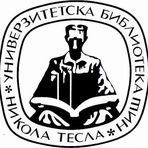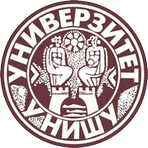Title
Teorije humora u kognitivističkim naukama i mogućnost njihove primene u proučavanju narativnog književnog teksta
Creator
Marković, Olivera S. 1989-
CONOR:
18354279
Copyright date
2024
Object Links
Select license
Autorstvo-Nekomercijalno-Bez prerade 3.0 Srbija (CC BY-NC-ND 3.0)
License description
Dozvoljavate samo preuzimanje i distribuciju dela, ako/dok se pravilno naznačava ime autora, bez ikakvih promena dela i bez prava komercijalnog korišćenja dela. Ova licenca je najstroža CC licenca. Osnovni opis Licence: http://creativecommons.org/licenses/by-nc-nd/3.0/rs/deed.sr_LATN. Sadržaj ugovora u celini: http://creativecommons.org/licenses/by-nc-nd/3.0/rs/legalcode.sr-Latn
Language
Serbian
Cobiss-ID
Theses Type
Doktorska disertacija
description
Datum odbrane: 25.12.2025.
Other responsibilities
Academic Expertise
Društveno-humanističke nauke
University
Univerzitet u Nišu
Faculty
Filozofski fakultet
Group
Departman za srpsku i komparativnu književnost
Alternative title
Humor theories in cognitive sciences and possibilities of their application in a narrative literary text analysis
Publisher
[О. S. Marković]
Format
883 str.
description
Biografija autora: str. 883.
Bibliografija: str. 845-882.
description
Literary science, Semantics.
Abstract (en)
The doctoral dissertation investigates potential theoretical-methodological correlations between cognitive psychology, cognitive linguistics, and narratology, intending to identify specificities of storywolds as mental representations for longer humorous literary narratives. The dissertation hinted at the possibilities of interdisciplinary cooperation between narratology and cognitive semantics, namely: in connection with the enrichment of the storyworld model through the conceptual integration theory, and in connection with humorous narratives; by pointing out the limitations of cognitive linguistic approaches to longer literary narratives as supra-syntactic structures; in terms of developing a conceptual integration model with regard to the specificities of literary narratives.
In the first part, the relevant cognitive construals and principles are systematized, along with the first and the second generation of cognitive theories of humor (amodal/modal approaches). Humorous phenomenon is pertained to the humorous incongruity – a deviation from the prototypical (marked) usage of cognitive construals, along with another condition, the effect of surprise as a function of the semantic-pragmatic distance. It is proposed that humor represents a cognitive megaframe that enables the creation and comprehension of a stimulus as humorous. This is a cognitive category of scalar type, ontogenetically and phylogenetically formed, whereby the center of the category contains the ability to recognize the global contrariety, and different types of information marking to form incongruous constructions are related to the basic model through Wittgensteinian family resemblances.
In the second, narratological, part, the thesis is postulated that every humorous literary narrative contains one/multiple central humorous (marked) metaphors, global because they encode most of the humorous effects and macro-dimensions of the storyworld. The storyworld qualities are extracted in relation to factors that determine composition, completion, and elaboration of the given metaphors. Incongruency of the central metaphor marks/encodes the storyworld through at least two opposing systems of narrative modalities and systems of narrative perspective.
The relation to the cognitive megaframe for humor explains cases of repeated humorous stimulus, borderline humorous narratives, and texts that do not cause a humorous effect in contemporary readings. The hypostatized comic genre is understood as a hypostasis of the cognitive frame for humor and the preliminary list of the basic comic/humorous subgenres is proposed – comedy of character, comedy of intrigue, satire, and parody. All the given genres found their space in the application part of the research.
Authors Key words
humor, humorna metafora, teorija pojmovnog sažimanja, kognitivni okvir, utemeljenje, kognitivistika/kognitivne nauke, kognitivna naratologija, (humorni) narativ, svet priče, perspektiva
Authors Key words
humor, humorous incongruity, humorous metaphor, conceptual integration network, cognitive frame, grounding, cognitive sciences, (humorous) narrative, storyworld, perspective
Classification
82.01:159.9(043.3)
Subject
H 352; H 390
Type
Tekst
Abstract (en)
The doctoral dissertation investigates potential theoretical-methodological correlations between cognitive psychology, cognitive linguistics, and narratology, intending to identify specificities of storywolds as mental representations for longer humorous literary narratives. The dissertation hinted at the possibilities of interdisciplinary cooperation between narratology and cognitive semantics, namely: in connection with the enrichment of the storyworld model through the conceptual integration theory, and in connection with humorous narratives; by pointing out the limitations of cognitive linguistic approaches to longer literary narratives as supra-syntactic structures; in terms of developing a conceptual integration model with regard to the specificities of literary narratives.
In the first part, the relevant cognitive construals and principles are systematized, along with the first and the second generation of cognitive theories of humor (amodal/modal approaches). Humorous phenomenon is pertained to the humorous incongruity – a deviation from the prototypical (marked) usage of cognitive construals, along with another condition, the effect of surprise as a function of the semantic-pragmatic distance. It is proposed that humor represents a cognitive megaframe that enables the creation and comprehension of a stimulus as humorous. This is a cognitive category of scalar type, ontogenetically and phylogenetically formed, whereby the center of the category contains the ability to recognize the global contrariety, and different types of information marking to form incongruous constructions are related to the basic model through Wittgensteinian family resemblances.
In the second, narratological, part, the thesis is postulated that every humorous literary narrative contains one/multiple central humorous (marked) metaphors, global because they encode most of the humorous effects and macro-dimensions of the storyworld. The storyworld qualities are extracted in relation to factors that determine composition, completion, and elaboration of the given metaphors. Incongruency of the central metaphor marks/encodes the storyworld through at least two opposing systems of narrative modalities and systems of narrative perspective.
The relation to the cognitive megaframe for humor explains cases of repeated humorous stimulus, borderline humorous narratives, and texts that do not cause a humorous effect in contemporary readings. The hypostatized comic genre is understood as a hypostasis of the cognitive frame for humor and the preliminary list of the basic comic/humorous subgenres is proposed – comedy of character, comedy of intrigue, satire, and parody. All the given genres found their space in the application part of the research.
“Data exchange” service offers individual users metadata transfer in several different formats. Citation formats are offered for transfers in texts as for the transfer into internet pages. Citation formats include permanent links that guarantee access to cited sources. For use are commonly structured metadata schemes : Dublin Core xml and ETUB-MS xml, local adaptation of international ETD-MS scheme intended for use in academic documents.


